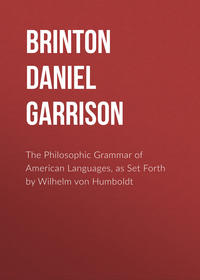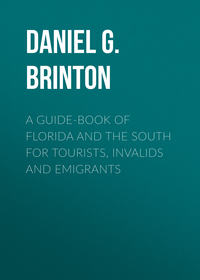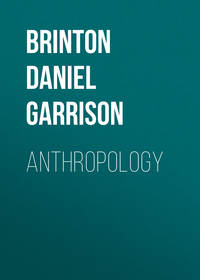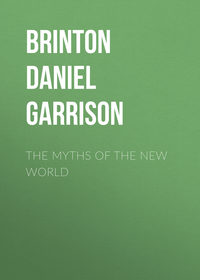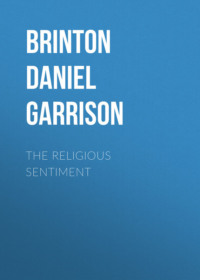
American Hero-Myths: A Study in the Native Religions of the Western Continent
"This is how the heaven exists, how the Heart of Heaven exists, he, the god, whose name is Qabauil."
"His word came in the darkness to the Lord, to Gucumatz, and it spoke with the Lord, with Gucumatz."
"They spoke together; they consulted and planned; they understood; they united in words and plans."
"As they consulted, the day appeared, the white light came forth, mankind was produced, while thus they held counsel about the growth of trees and vines, about life and mankind, in the darkness, in the night (the creation was brought about), by the Heart of Heaven, whose name is Hurakan."[8]
But the national culture-hero of the Kiches seems to have been Xbalanque, a name which has the literal meaning, "Little Tiger Deer," and is a symbolical appellation referring to days in their calendar. Although many of his deeds are recounted in the Popol Vuh, that work does not furnish us his complete mythical history. From it and other sources we learn that he was one of the twins supposed to have been born of a virgin mother in Utatlan, the central province of the Kiches, to have been the guide and protector of their nation, and in its interest to have made a journey to the Underworld, in order to revenge himself on his powerful enemies, its rulers. He was successful, and having overcome them, he set free the Sun, which they had seized, and restored to life four hundred youths whom they had slain, and who, in fact, were the stars of heaven. On his return, he emerged from the bowels of the earth and the place of darkness, at a point far to the east of Utatlan, at some place located by the Kiches near Coban, in Vera Paz, and came again to his people, looking to be received with fitting honors. But like Viracocha, Quetzalcoatl, and others of these worthies, the story goes that they treated him with scant courtesy, and in anger at their ingratitude, he left them forever, in order to seek a nobler people.
I need not enter into a detailed discussion of this myth, many points in which are obscure, the less so as I have treated them at length in a monograph readily accessible to the reader who would push his inquiries further. Enough if I quote the conclusion to which I there arrive. It is as follows:–
"Suffice it to say that the hero-god, whose name is thus compounded of two signs in the calendar, who is one of twins born of a virgin, who performs many surprising feats of prowess on the earth, who descends into the world of darkness and sets free the sun, moon and stars to perform their daily and nightly journeys through the heavens, presents in these and other traits such numerous resemblances to the Divinity of Light, the Day-maker of the northern hunting tribes, reappearing in so many American legends, that I do not hesitate to identify the narrative of Xbalanque and his deeds as but another version of this wide-spread, this well-nigh universal myth."[9]
Few of our hero-myths have given occasion for wilder speculation than that of Votan. He was the culture hero of the Tzendals, a branch of the Maya race, whose home was in Chiapas and Tabasco. Even the usually cautious Humboldt suggested that his name might be a form of Odin or Buddha! As for more imaginative writers, they have made not the least difficulty in discovering that it is identical with the Odon of the Tarascos, the Oton of the Othomis, the Poudan of the East Indian Tamuls, the Vaudoux of the Louisiana negroes, etc. All this has been done without any attempt having been made to ascertain the precise meaning and derivation of the name Votan. Superficial phonetic similarities have been the only guide.
We are not well acquainted with the Votan myth. It appears to have been written down some time in the seventeenth century, by a Christianized native. His manuscript of five or six folios, in the Tzendal tongue, came into the possession of Nuñez de la Vega, Bishop of Chiapas, about 1690, and later into the hands of Don Ramon Ondonez y Aguiar, where it was seen by Dr. Paul Felix Cabrera, about 1790. What has become of it is not known.
No complete translation of it was made; and the extracts or abstracts given by the authors just named are most unsatisfactory, and disfigured by ignorance and prejudice. None of them, probably, was familiar with the Tzendal tongue, especially in its ancient form. What they tell us runs as follows:–
At some indefinitely remote epoch, Votan came from the far East. He was sent by God to divide out and assign to the different races of men the earth on which they dwell, and to give to each its own language. The land whence he came was vaguely called ualum uotan, the land of Votan.
His message was especially to the Tzendals. Previous to his arrival they were ignorant, barbarous, and without fixed habitations. He collected them into villages, taught them how to cultivate the maize and cotton, and invented the hieroglyphic signs, which they learned to carve on the walls of their temples. It is even said that he wrote his own history in them.
He instituted civil laws for their government, and imparted to them the proper ceremonials of religious worship. For this reason he was also called "Master of the Sacred Drum," the instrument with which they summoned the votaries to the ritual dances.
They especially remembered him as the inventor of their calendar. His name stood third in the week of twenty days, and was the first Dominical sign, according to which they counted their year, corresponding to the Kan of the Mayas.
As a city-builder, he was spoken of as the founder of Palenque, Nachan, Huehuetlan–in fact, of any ancient place the origin of which had been forgotten. Near the last mentioned locality, Huehuetlan in Soconusco, he was reported to have constructed an underground temple by merely blowing with his breath. In this gloomy mansion he deposited his treasures, and appointed a priestess to guard it, for whose assistance he created the tapirs.
Votan brought with him, according to one statement, or, according to another, was followed from his native land by, certain attendants or subordinates, called in the myth tzequil, petticoated, from the long and flowing robes they wore. These aided him in the work of civilization. On four occasions he returned to his former home, dividing the country, when he was about to leave, into four districts, over which he placed these attendants.
When at last the time came for his final departure, he did not pass through the valley of death, as must all mortals, but he penetrated through a cave into the under-earth, and found his way to "the root of heaven." With this mysterious expression, the native myth closes its account of him.[10]
He was worshiped by the Tzendals as their principal deity and their beneficent patron. But he had a rival in their religious observances, the feared Yalahau Lord of Blackness, or Lord of the Waters. He was represented as a terrible warrior, cruel to the people, and one of the first of men.[11]
According to an unpublished work by Fuentes, Votan was one of four brothers, the common ancestors of the southwestern branches of the Maya family.[12]
All these traits of this popular hero are too exactly similar to those of the other representatives of this myth, for them to leave any doubt as to what we are to make of Votan. Like the rest of them, he and his long-robed attendants are personifications of the eastern light and its rays. Though but uncritical epitomes of a fragmentary myth about him remain, they are enough to stamp it as that which meets us so constantly, no matter where we turn in the New World.[13]
It scarcely seems necessary for me to point out that his name Votan is in no way akin to Othomi or Tarasco roots, still less to the Norse Wodan or the Indian Buddha, but is derived from a radical in pure Maya. Yet I will do so, in order, if possible, to put a stop to such visionary etymologies.
As we are informed by Bishop Nuñez de la Vega, uotan in Tzendal means heart. Votan was spoken of as "the heart or soul of his people." This derivation has been questioned, because the word for the heart in the other Maya dialects is different, and it has been suggested that this was but an example of "otosis," where a foreign proper name was turned into a familiar common noun. But these objections do not hold good.
In regard to derivation, uotan is from the pure Maya root-word tan, which means primarily "the breast," or that which is in front or in the middle of the body; with the possessive prefix it becomes utan. In Tzendal this word means both breast and heart. This is well illustrated by an ancient manuscript, dating from 1707, in my possession. It is a guide to priests for administering the sacraments in Spanish and Tzendal. I quote the passage in point[14]:–
"Con todo tu corazón, hiriendote
en los pechos, di, conmigo."
Ta zpizil auotan, xatigh zny
auotan, zghoyoc, alagh ghoyoc.–
Here, a is the possessive of the second person, and uotan is used both for heart and breast. Thus the derivation of the word from the Maya radical is clear.
The figure of speech by which the chief divinity is called "the heart of the earth," "the heart of the sky," is common in these dialects, and occurs repeatedly in the Popol Vuh, the sacred legend of the Kiches of Guatemala.
I may here repeat what I have elsewhere written on this figurative expression in the Maya languages: "The literal or physical sense of the word heart is not that which is here intended. In these dialects this word has a richer metaphorical meaning than in our tongue. It stands for all the psychical powers, the memory, will and reasoning faculties, the life, the spirit, the soul. It would be more correct to render these names the 'Spirit' or 'Soul' of the lake, etc., than the 'Heart.' They indicate a dimly understood sense of the unity of spirit or energy in all the various manifestations of organic and inorganic existence." The Names of the Gods in the Kiche Myths, Central America, by Daniel G. Brinton, in Proceedings of the American Philosophical Society, vol. xix, 1881, p. 623.[15]
The immediate neighbors of the Tzendals were the Mixes and Zoques, the former resident in the central mountains of the Isthmus of Tehuantepec, the latter rather in the lowlands and toward the eastern coast. The Mixes nowadays number but a few villages, whose inhabitants are reported as drunken and worthless, but the time was when they were a powerful and warlike nation. They are in nowise akin to the Maya stock, although they are so classed in Mr. H.H. Bancroft's excellent work.[16] They have, however, a distinct relationship with the Zoques, about thirty per cent of the words in the two languages being similar.[17] The Zoques, whose mythology we unfortunately know little or nothing about, adjoined the Tzendals, and were in constant intercourse with them.
We have but faint traces of the early mythology of these tribes; but they preserved some legends which show that they also partook of the belief, so general among their neighbors, of a beneficent culture-god.
This myth relates that their first father, who was also their Supreme God, came forth from a cave in a lofty mountain in their country, to govern and direct them. He covered the soil with forests, located the springs and streams, peopled them with fish and the woods with game and birds, and taught the tribe how to catch them. They did not believe that he had died, but that after a certain length of time, he, with his servants and captives, all laden with bright gleaming gold, retired into the cave and closed its mouth, not to remain there, but to reappear at some other part of the world and confer similar favors on other nations.
The name, or one of the names, of this benefactor was Condoy, the meaning of which my facilities do not enable me to ascertain.[18]
There is scarcely enough of this to reveal the exact lineaments of their hero; but if we may judge from these fragments as given by Carriedo, it appears to be of precisely the same class as the other hero-myths I have collected in this volume. Historians of authority assure us that the Mixes, Zoques and Zapotecs united in the expectation, founded on their ancient myths and prophecies, of the arrival, some time, of men from the East, fair of hue and mighty in power, masters of the lightning, who would occupy the land.[19]
On the lofty plateau of the Andes, in New Granada, where, though nearly under the equator, the temperature is that of a perpetual spring, was the fortunate home of the Muyscas. It is the true El Dorado of America; every mountain stream a Pactolus, and every hill a mine of gold. The natives were peaceful in disposition, skilled in smelting and beating the precious metal that was everywhere at hand, lovers of agriculture, and versed in the arts of spinning, weaving and dying cotton. Their remaining sculptures prove them to have been of no mean ability in designing, and it is asserted that they had a form of writing, of which their signs for the numerals have alone been preserved.
The knowledge of these various arts they attributed to the instructions of a wise stranger who dwelt among them many cycles before the arrival of the Spaniards. He came from the East, from the llanos of Venezuela or beyond them, and it was said that the path he made was broad and long, a hundred leagues in length, and led directly to the holy temple at his shrine at Sogamoso. In the province of Ubaque his footprints on the solid rock were reverently pointed out long after the Conquest. His hair was abundant, his beard fell to his waist, and he dressed in long and flowing robes. He went among the nations of the plateaux, addressing each in its own dialect, taught them to live in villages and to observe just laws. Near the village of Coto was a high hill held in special veneration, for from its prominent summit he was wont to address the people who gathered round its base. Therefore it was esteemed a sanctuary, holy to the living and the dead. Princely families from a distance carried their dead there to be interred, because this teacher had said that man does not perish when he dies, but shall rise again. It was held that this would be more certain to occur in the very spot where he announced this doctrine. Every sunset, when he had finished his discourse, he retired into a cave in the mountain, not to reappear again until the next morning.
For many years, some said for two thousand years, did he rule the people with equity, and then he departed, going back to the East whence he came, said some authorities, but others averred that he rose up to heaven. At any rate, before he left, he appointed a successor in the sovereignty, and recommended him to pursue the paths of justice.[20]
What led the Spanish missionaries to suspect that this was one of the twelve apostles, was not only these doctrines, but the undoubted fact that they found the symbol of the cross already a religious emblem among this people. It appeared in their sacred paintings, and especially, they erected one over the grave of a person who had died from the bite of a serpent.
A little careful investigation will permit us to accept these statements as quite true, and yet give them a very different interpretation.
That this culture-hero arrives from the East and returns to the East are points that at once excite the suspicion that he was the personification of the Light. But when we come to his names, no doubt can remain. These were various, but one of the most usual was Chimizapagua, which, we are told, means "a messenger from Chiminigagua." In the cosmogonical myths of the Muyscas this was the home or source of Light, and was a name applied to the demiurgic force. In that mysterious dwelling, so their account ran, light was shut up, and the world lay in primeval gloom. At a certain time the light manifested itself, and the dawn of the first morning appeared, the light being carried to the four quarters of the earth by great black birds, who blew the air and winds from their beaks. Modern grammarians profess themselves unable to explain the exact meaning of the name Chiminigagua, but it is a compound, in which, evidently, appear the words chie, light, and gagua, Sun.[21]
Other names applied to this hero-god were Nemterequeteba, Bóchica, and Zuhe, or Sua, the last mentioned being also the ordinary word for the Sun. He was reported to have been of light complexion, and when the Spaniards first arrived they were supposed to be his envoys, and were called sua or gagua, just as from the memory of a similar myth in Peru they were addressed as Viracochas.
In his form as Bóchica, he is represented as the supreme male divinity, whose female associate is the Rainbow, Cuchaviva, goddess of rains and waters, of the fertility of the fields, of medicine, and of child-bearing in women, a relationship which I have already explained.[22]
Wherever the widespread Tupi-Guaranay race extended–from the mouth of the Rio de la Plata and the boundless plains of the Pampas, north to the northernmost islands of the West Indian Archipelago–the early explorers found the natives piously attributing their knowledge of the arts of life to a venerable and benevolent old man whom they called "Our Ancestor," Tamu, or Tume, or Zume.
The early Jesuit missionaries to the Guaranis and affiliated tribes of Paraguay and southern Brazil, have much to say of this personage, and some of them were convinced that he could have been no other than the Apostle St. Thomas on his proselytizing journey around the world.
The legend was that Pay Zume, as he was called in Paraguay (Pay = magician, diviner, priest), came from the East, from the Sun-rising, in years long gone by. He instructed the people in the arts of hunting and agriculture, especially in the culture and preparation of the manioca plant, their chief source of vegetable food. Near the city of Assumption is situated a lofty rock, around which, says the myth, he was accustomed to gather the people, while he stood above them on its summit, and delivered his instructions and his laws, just as did Quetzalcoatl from the top of the mountain Tzatzitepec, the Hill of Shouting. The spot where he stood is still marked by the impress of his feet, which the pious natives of a later day took pride in pointing out as a convincing proof that their ancestors received and remembered the preachings of St. Thomas.[23] This was not a suggestion of their later learning, but merely a christianized term given to their authentic ancient legend. As early as 1552, when Father Emanuel Nobrega was visiting the missions of Brazil, he heard the legend, and learned of a locality where not only the marks of the feet, but also of the hands of the hero-god had been indelibly impressed upon the hard rock. Not satisfied with the mere report, he visited the spot and saw them with his own eyes, but indulged in some skepticism as to their origin.[24]
The story was that wherever this hero-god walked, he left behind him a well-marked path, which was permanent, and as the Muyscas of New Granada pointed out the path of Bochica, so did the Guaranays that of Zume, which the missionaries regarded "not without astonishment."[25] He lived a certain length of time with his people and then left them, going back over the ocean toward the East, according to some accounts. But according to others, he was driven away by his stiff-necked and unwilling auditors, who had become tired of his advice. They pursued him to the bank of a river, and there, thinking that the quickest riddance of him was to kill him, they discharged their arrows at him. But he caught the arrows in his hand and hurled them back, and dividing the waters of the river by his divine power he walked between them to the other bank, dry-shod, and disappeared from their view in the distance.
Like all the hero-gods, he left behind him the well-remembered promise that at some future day he should return to them, and that a race of men should come in time, to gather them into towns and rule them in peace.[26] These predictions were carefully noted by the missionaries, and regarded as the "unconscious prophecies of heathendom" of the advent of Christianity; but to me they bear too unmistakably the stamp of the light-myth I have been following up in so many localities of the New World for me to entertain a doubt about their origin and meaning.
I have not yet exhausted the sources from which I could bring evidence of the widespread presence of the elements of this mythical creation in America. But probably I have said enough to satisfy the reader on this point. At any rate it will be sufficient if I close the list with some manifest fragments of the myth, picked out from the confused and generally modern reports we have of the religions of the Athabascan race. This stem is one of the most widely distributed in North America, extending across the whole continent south of the Eskimos, and scattered toward the warmer latitudes quite into Mexico. It is low down in the intellectual scale, its component tribes are usually migratory savages, and its dialects are extremely synthetic and of difficult phonetics, requiring as many as sixty-five letters for their proper orthography. No wonder, therefore, that we have but limited knowledge of their mental life.
Conspicuous in their myths is the tale of the Two Brothers. These mysterious beings are upon the earth before man appears. Though alone, they do not agree, and the one attacks and slays the other. Another brother appears on the scene, who seems to be the one slain, who has come to life, and the two are given wives by the Being who was the Creator of things. These two women were perfectly beautiful, but invisible to the eyes of mortals. The one was named, The Woman of the Light or The Woman of the Morning; the other was the Woman of Darkness or the Woman of Evening. The brothers lived together in one tent with these women, who each in turn went out to work. When the Woman of Light was at work, it was daytime; when the Woman of Darkness was at her labors, it was night.
In the course of time one of the brothers disappeared and the other determined to select a wife from one of the two women, as it seems he had not yet chosen. He watched what the Woman of Darkness did in her absence, and discovered that she descended into the waters and enjoyed the embraces of a monster, while the Woman of Light passed her time in feeding white birds. In course of time the former brought forth black man-serpents, while the Woman of Light was delivered of beautiful boys with white skins. The master of the house killed the former with his arrows, but preserved the latter, and marrying the Woman of Light, became the father of the human race, and especially of the Dènè Dindjié, who have preserved the memory of him.[27]
In another myth of this stock, clearly a version of the former, this father of the race is represented as a mighty bird, called Yêl, or Yale, or Orelbale, from the root ell, a term they apply to everything supernatural. He took to wife the daughter of the Sun (the Woman of Light), and by her begat the race of man. He formed the dry land for a place for them to live upon, and stocked the rivers with salmon, that they might have food. When he enters his nest it is day, but when he leaves it it is night; or, according to another myth, he has the two women for wives, the one of whom makes the day, the other the night.
In the beginning Yêl was white in plumage, but he had an enemy, by name Cannook, with whom he had various contests, and by whose machinations he was turned black. Yêl is further represented as the god of the winds and storms, and of the thunder and lightning.[28]
Thus we find, even in this extremely low specimen of the native race, the same basis for their mythology as in the most cultivated nations of Central America. Not only this; it is the same basis upon which is built the major part of the sacred stories of all early religions, in both continents; and the excellent Father Petitot, who is so much impressed by these resemblances that he founds upon them a learned argument to prove that the Dènè are of oriental extraction,[29] would have written more to the purpose had his acquaintance with American religions been as extensive as it was with those of Asiatic origin.
There is one point in all these myths which I wish to bring out forcibly. That is, the distinction which is everywhere drawn between the God of Light and the Sun. Unless this distinction is fully comprehended, American mythology loses most of its meaning.



